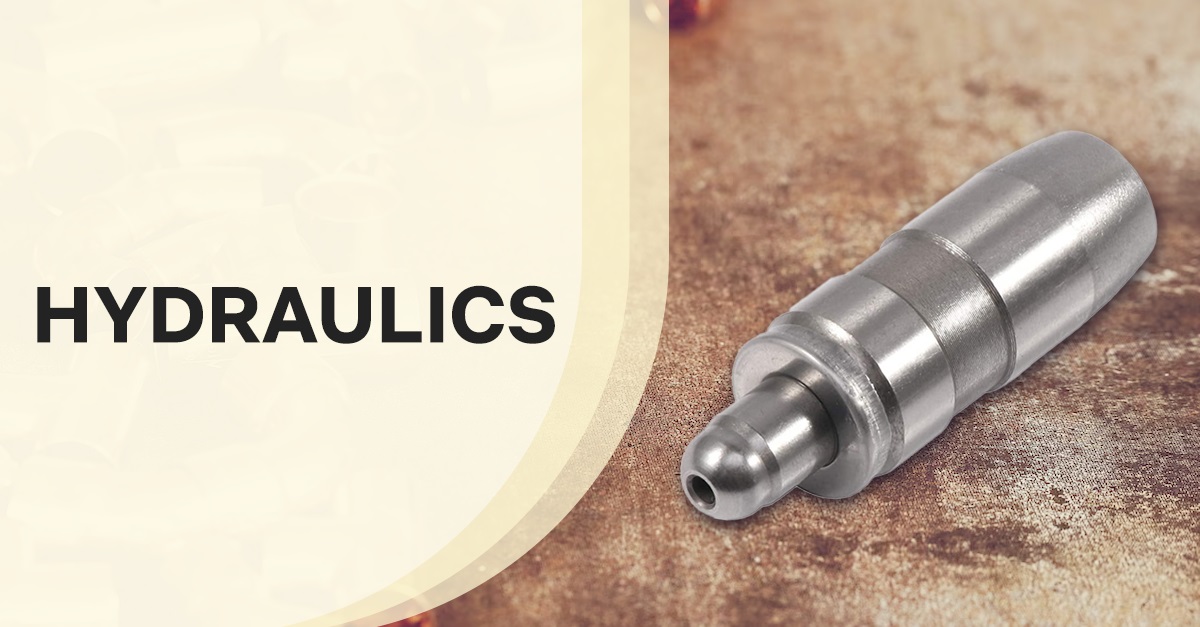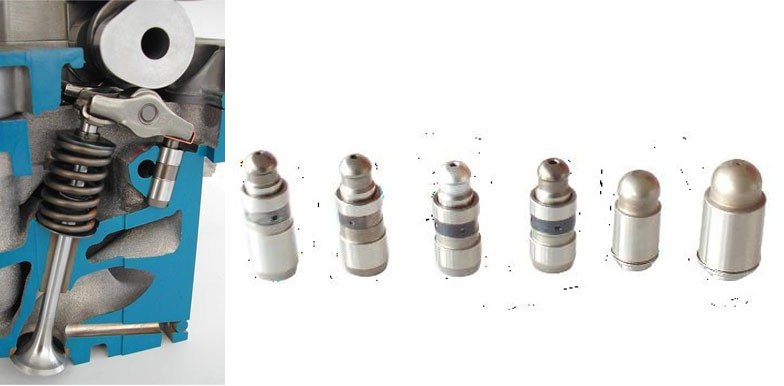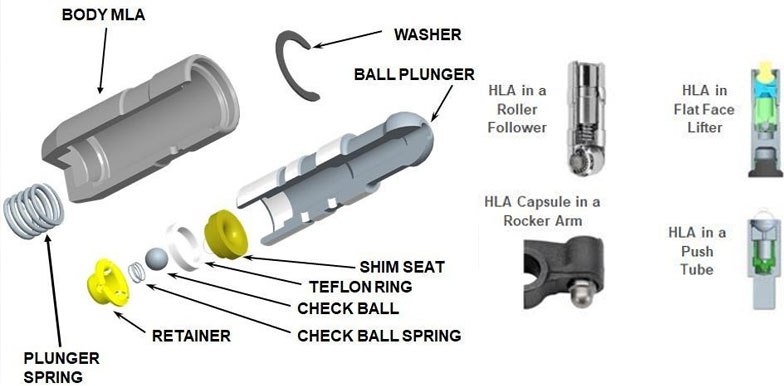
HYDRAULICS
25 May, 2023
It is defined as a mechanical function that operates through the force of liquid pressure. Hydraulic systems utilize compressed fluids to transfer force applied at one point to another point.
Working Principle
The basic principle behind any hydraulic system is very simple - pressure applied anywhere to a body of fluid causes a force to be transmitted equally in all directions, with the force acting at right angles to any surface in contact with the fluid. This is known as Pascal's Law.
HYDRAULIC LASH ADJUSTERS (HLA)
- It is a device for maintaining zero valve clearance in an internal combustion engine.
- The hydraulic lash adjuster is located between the camshaft and each engine valves, is a hollow steel cylinder encasing an internal piston. The lobed camshaft rhythmically presses against the lifter, which transmits the motion to the engine valve.
- It is a common component of a valve mechanism.
- They automatically adjust the valve clearance (valve lash) to account for thermal expansion of the valves.
- Core components: Assembly of a Cylinder and a plunger (piston), separated by piston rings.
- They are also known as Hydraulic Lash Lifters or Hydraulic Tappets

HYDRAULIC LASH ADJUSTER VS CONVENTIONAL LASH ADJUSTER
Conventional solid valve lifters require regular adjusting to maintain a small clearance between the valve and its rocker or cam follower. This space prevents the parts from binding as they expand with the engine's heat, but can also lead to noisy operation and increased wear as the parts rattle against one another until they reach operating temperature.
The hydraulic lifter was designed to compensate for this small tolerance, allowing the valve train to operate with zero clearance—leading to quieter operation, longer engine life, and eliminating the need for periodic adjustment of valve clearance.

ADVANTAGES
- As the whole process is actuated by hydraulic pressure at engine start, there is no need for service or adjustment.
- Another advantage is cheaper operation, as there is no need for service and charges associated with tappet maintenance.
DISADVANTAGES
- The valvetrain will rattle loudly on startup due to oil draining from the lifters when the vehicle is parked
- Hydraulic tappets require more complex and more expensive cylinder head design
- Hydraulic tappets are more sensitive to engine oil quality and frequency of oil changes, as carbon sludge and residues may easily lock up the tappets or block oil channels, making the clearance setting ineffective
- Hydraulic lifters can also create "valve bounce" at high RPM, which is undesirable for performance uses
HYDRAULIC MECHANISMS IN GPP INDIA
- HLA in Pushrod
- HLA in Rocker Arms
- Hydraulic Tappets
- HLA in Roller Finger Follower (RFF)



